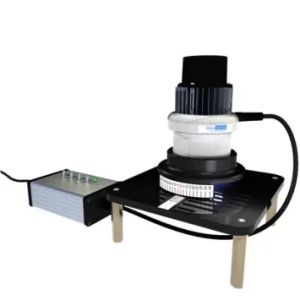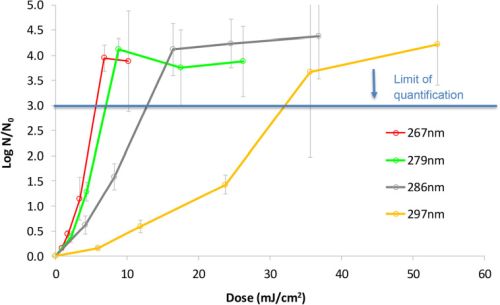Researchers from Tel Aviv University found that UV light at a wavelength of 285 nm was almost as efficient in disinfecting the Covid virus as a wavelength of 265 nm, requiring less than half a minute to destroy more than 99.9% of the coronaviruses. They say this result is significant because the cost of 285-nm LED bulbs is much lower than that of 265-nm bulbs, and the former are also more readily available.
The study led by Prof. Hadas Mamane, Head of the TAU School of Mechanical Engineering’s Environmental Engineering Program, is said to be the first conducted on the disinfection efficiency of UV-LED irradiation at different wavelengths or frequencies on a virus from the family of coronaviruses. The results were published in the Nov. 2020 issue of the Journal of Photochemistry and Photobiology B: Biology.
“We discovered that it is quite simple to kill the coronavirus using LED bulbs that radiate ultraviolet light,” Mamane explained. “We killed the viruses using cheaper and more readily available LED bulbs, which consume little energy and do not contain mercury like regular bulbs. Our research has commercial and societal implications, given the possibility of using such LED bulbs in all areas of our lives, safely and quickly.”

Researchers used the human Coronavirus OC43 (HCoV-OC43) as a surrogate to the SARS-CoV-2. UV-exposure experiments employed a UV-LED system (PearlBeam) from AquiSense Technologies in Charlotte, NC. AquiSense custom-made some of the LED equipment for the tests. The UV spectra of the UV-LED wavelengths used in the study were measured using an Ocean Optics USB4000 spectroradiometer, basically a tool able to measure both the amplitude and wavelength of a light source simultaneously.

TAU results: Dose (fluence) response curve of the HCoV-OC43 to UV-LEDs. N is virus count after the designated irradiation and N0 at time zero (without irradiation).
Researchers say the UV LEDs at 267 and 279 nm were highly effective at inactivating the Coronavirus (3-log inactivation at irradiation 6–7 mJ/cm2), whereas longer UV-LED wavelengths (i.e., 286 and 297 nm) required higher doses for 3-log inactivation (13 mJ/cm2 and 32 mJ/cm2, respectively). But even these wavelengths resulted in effective inactivation.
Generally, the wavelength ~ 260 nm showed slightly higher effectivity then ~280 nm. Increasing the wavelength to ~300 nm caused a dramatic drop in disinfection effectivity. In the same manner, the HCoV-OC43 showed a similar dose-response to irradiation at 267 and 279 nm, somewhat lower sensitivity to 286 nm, and a sharp increase in the required dose when irradiated at 297 nm.
In the future, the researchers say they will test their unique combination of integrated damage mechanisms and more ideas they recently developed on combined efficient direct and indirect damage to bacteria and viruses on different surfaces, air, and water.

